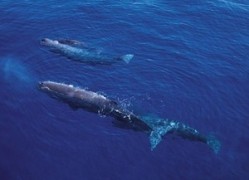New research highlights accumulative effect of cosmetics compounds in mammals

The study, which was published in the peer reviewed journal Environmental Science & Technology and is being led by a team of five scientists, points to a growing body of research supporting claims that compounds from such products are ending up in marine creatures such as otters and dolphins, that come into contact with such pollution.
Evidence has also come to light these compounds are being found in polar bears – creatures that invariably live thousands of miles away from the sources of such pollution.
The study hopes to throw light on how far cosmetic compounds such as parabens can be transported by waterways and the sea, and what effects varying levels of the compounds as well as repeated exposure can have on mammals.
Research into parabens has come a long way
About ten years ago research into parabens and their effects on humans was widely misinterpreted, which led to it being associated with breast cancer. Subsequent clarification and further research had refuted this with proof that parabens are broken down and excreted by the human body.
However, further studies have provided evidence that parabens can have an estrogenic effect in humans and that this can cause adverse physical symptoms in males due to an accumulation of the compounds in fat cells under the skin.
Building on this evidence in humans, the pretext for this study is to find out more about how parabens are processed by mammals and about the accumulative effect in their tissue.
Study assessed six parabens in eight mammals
The study assessed the accumulation of six parabens and four common metabolites of parabens, which were measured in a total of 121 samples taken from eight different types of marine animals collected in the coastal waters of Florida, California, Washington, and Alaska.
The study found that of the six parabens it was methylparaben that was predominantly found in the assessed marine tissue samples.
In particular, the highest traces of methylparaben were found in the livers of bottlenose dolphins from Sarasota Bay, Florida, with a level of 865ng/g (wet weight).
Paraben metabolite 4-HB
Likewise, the predominant paraben metabolite was 4-Hydroxybenzoic acid (4-HB), which showed up in all the mammal tissue samples.
The 4-HB metabolite was reported to be in the hundreds of thousands of ng/g in samples taken from Florida bottlenose dolphins - the highest ever reported - while trace amounts were also found in polar bears.
While the research team has stressed their belief that the amounts of parabens found in the mammal tissue sample may not put their lives in danger, they want to now carry out further research to determine the effects they may have on development and growth.
Ref: Jingchuan Xue, Nozomi Sasaki, Madhavan Elangovan, Guthrie Diamond, and Kurunthachalam Kannan
Environ. Sci. Technol., 2015, 49 (20), pp 12071–12079
Publication Date (Web): September 17, 2015 (Article)
DOI: 10.1021/acs.est.5b03601









